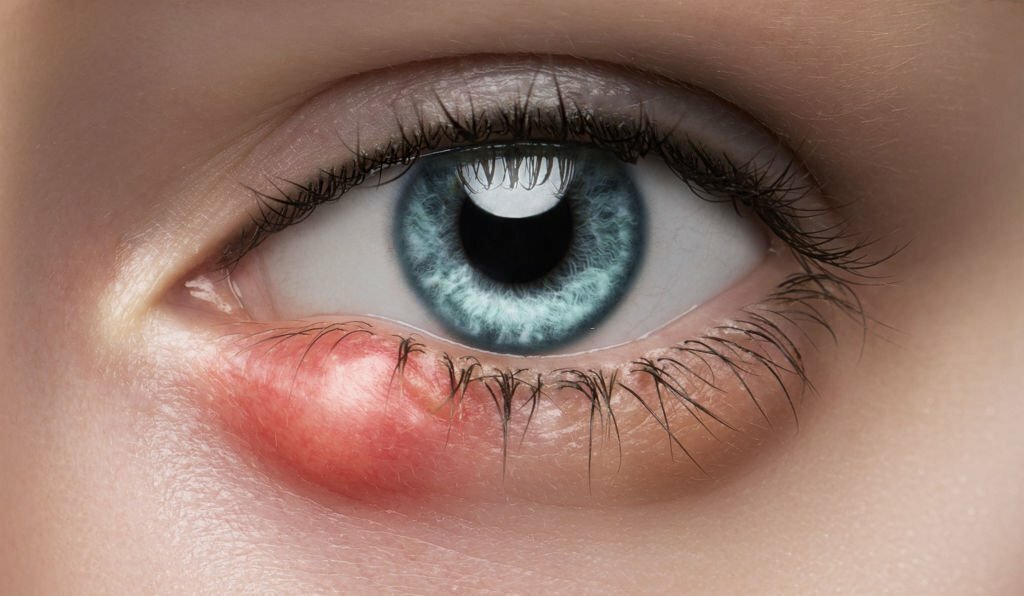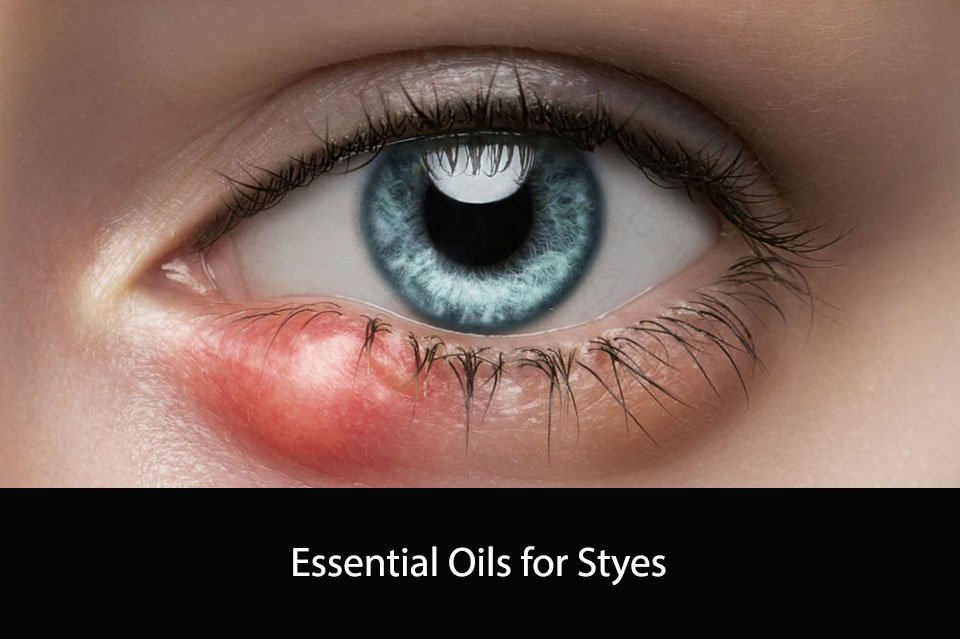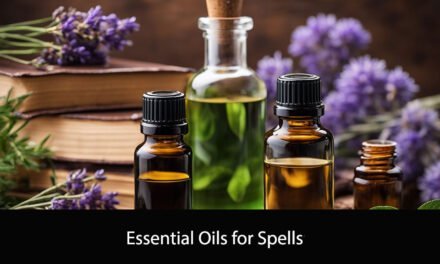Essential oils have been used for centuries for their therapeutic benefits. They are concentrated plant extracts that have a range of properties, including anti-inflammatory, antimicrobial, and soothing effects. One of the conditions that essential oils can help with is styes.
Styes are a common eye condition that can be painful and uncomfortable. They are caused by a bacterial infection of the eyelid glands and can result in a red, swollen bump on the eyelid. While styes usually go away on their own, they can be treated with essential oils to help speed up the healing process and reduce discomfort.
In this article, we will explore some of the best essential oils for styes and how to use them safely and effectively. We will also discuss some tips for preventing styes and when to seek medical attention. With the right essential oils and proper care, you can alleviate the symptoms of styes and promote faster healing.
Understanding Styes

Styes are a common eye condition that can be uncomfortable and unsightly. They are caused by an infection of the oil glands in the eyelid and typically appear as a red, swollen bump near the edge of the eyelid.
Styes can be caused by a variety of factors, including poor hygiene, stress, and a weakened immune system. They can also be a side effect of certain medications.
While styes are usually harmless and will go away on their own within a few days, they can be painful and irritating. In some cases, they can also lead to complications such as cellulitis or a chalazion.
It’s important to avoid touching or rubbing the affected area, as this can spread the infection and make the stye worse. If you have a stye, it’s also important to practice good hygiene, such as washing your hands regularly and avoiding sharing towels or other personal items.
If you experience frequent or recurring styes, it may be a sign of an underlying condition that requires medical attention. In these cases, it’s important to consult with a healthcare professional to determine the best course of treatment.
What Are Essential Oils?

Essential oils are highly concentrated plant extracts that are obtained through steam distillation or cold pressing of various parts of plants such as leaves, flowers, stems, and roots. These oils contain the natural fragrance and essence of the plant and are known for their therapeutic properties.
Essential oils have been used for centuries in traditional medicine practices to treat various ailments and promote overall well-being. In recent years, they have gained popularity as a natural alternative to conventional medicine due to their effectiveness and minimal side effects.
There are hundreds of different essential oils available, each with its unique properties and benefits. Some of the most commonly used essential oils for styes include tea tree oil, lavender oil, chamomile oil, and peppermint oil. These oils have antibacterial, anti-inflammatory, and soothing properties that can help reduce the symptoms of styes and promote faster healing.
It’s important to note that essential oils should always be used with caution and under the guidance of a healthcare professional. While they are generally safe when used properly, they can cause adverse reactions in some individuals, especially those with sensitive skin or underlying medical conditions.
Benefits of Essential Oils for Styes

Essential oils have been used for centuries to treat a variety of health conditions, including styes. Here are some of the benefits of using essential oils to treat styes:
- Antibacterial properties: Many essential oils have antibacterial properties that can help kill the bacteria that cause styes. Tea tree oil, for example, has been shown to be effective against Staphylococcus aureus, the bacteria that commonly causes styes.
- Anti-inflammatory properties: Styes are often accompanied by inflammation, which can cause redness, swelling, and pain. Essential oils like lavender and chamomile have anti-inflammatory properties that can help reduce these symptoms.
- Soothing effects: Essential oils can have a calming and soothing effect on the skin, which can help relieve discomfort caused by styes. Some oils, like peppermint and eucalyptus, can also provide a cooling sensation that can help reduce swelling.
- Natural remedy: Essential oils are a natural remedy for styes that can be used instead of over-the-counter or prescription medications. They are generally safe and have few side effects when used properly.
Overall, using essential oils for styes can be an effective and natural way to treat this common eye condition. However, it’s important to talk to a healthcare professional before using essential oils, especially if you have any underlying health conditions or are taking medications.
Top Essential Oils for Styes

When it comes to treating styes, essential oils can be a natural and effective way to relieve the symptoms. Here are some of the top essential oils that can help with styes:
Tea Tree Oil
Tea tree oil is a powerful essential oil that has antibacterial and anti-inflammatory properties. It can help reduce the swelling and redness associated with styes, and also help prevent the infection from spreading. To use tea tree oil for styes, mix a few drops with a carrier oil such as coconut oil and apply it to the affected area.
Lavender Oil
Lavender oil is well-known for its calming and soothing properties, but it can also be effective in treating styes. It has antibacterial properties that can help fight off the infection, and its anti-inflammatory properties can help reduce the swelling and pain. To use lavender oil for styes, mix a few drops with a carrier oil and apply it to the affected area.
Chamomile Oil
Chamomile oil is another essential oil that can help with styes. It has anti-inflammatory and antibacterial properties that can help reduce the swelling and pain, and also help prevent the infection from spreading. To use chamomile oil for styes, mix a few drops with a carrier oil and apply it to the affected area.
Frankincense Oil
Frankincense oil is a powerful essential oil that has been used for centuries for its medicinal properties. It has anti-inflammatory and antibacterial properties that can help reduce the swelling and pain associated with styes, and also help prevent the infection from spreading. To use frankincense oil for styes, mix a few drops with a carrier oil and apply it to the affected area.
Overall, essential oils can be a natural and effective way to treat styes. However, it’s important to use them properly and always dilute them with a carrier oil before applying them to the skin. If you experience any adverse reactions, stop using the essential oil immediately and seek medical attention if necessary.
How to Apply Essential Oils for Styes

When applying essential oils for styes, it is important to follow proper application techniques to ensure effective results. Here are some steps to follow:
- Cleanse the affected area: Before applying essential oils, it is important to cleanse the affected area with warm water and a mild soap. This will help remove any bacteria or dirt that may be exacerbating the stye.
- Dilute the essential oil: Essential oils are highly concentrated and can cause skin irritation if not properly diluted. Mix a few drops of essential oil with a carrier oil, such as coconut or almond oil, to dilute it.
- Apply the oil: Using a clean cotton swab or pad, apply the diluted essential oil to the affected area. Be careful not to get any oil in the eye.
- Repeat as needed: Apply the essential oil to the stye two to three times a day until it clears up.
Some essential oils that are effective for styes include tea tree oil, lavender oil, and chamomile oil. These oils have natural anti-inflammatory and antibacterial properties that can help reduce swelling and fight infection.
It is important to note that essential oils should not be used as a substitute for medical treatment. If the stye persists or worsens, seek medical attention from a healthcare professional.
Safety Precautions When Using Essential Oils
When using essential oils for styes, it is important to take certain safety precautions to avoid any adverse reactions or side effects. Here are some things to keep in mind:
- Always dilute essential oils with a carrier oil before applying them to the skin. Undiluted essential oils can be too strong and may cause skin irritation or other reactions.
- Avoid using essential oils near the eyes or on the eyelids. This can cause irritation or damage to the eyes.
- Do not ingest essential oils unless directed to do so by a healthcare professional. Ingesting essential oils can be harmful and can cause serious health problems.
- Keep essential oils out of reach of children and pets. Some essential oils can be toxic if ingested or applied improperly.
- If you are pregnant, nursing, or have a medical condition, consult with a healthcare professional before using essential oils. Some essential oils can interact with certain medications or medical conditions.
By following these safety precautions, you can use essential oils for styes safely and effectively. Remember to always use high-quality, pure essential oils and to follow the recommended dilution ratios. If you experience any adverse reactions or side effects, discontinue use immediately and seek medical attention if necessary.
When to Consult a Doctor
If you have a stye that is not responding to home remedies or is getting worse, it may be time to consult a doctor. Additionally, if you experience any of the following symptoms, you should seek medical attention:
- Pain that is severe or worsening
- Swelling that is spreading beyond the eyelid
- Changes in vision
- Fever
In some cases, a stye can develop into a more serious infection, such as cellulitis or orbital cellulitis. These conditions require immediate medical attention.
If you have a chronic condition, such as diabetes or a weakened immune system, you may be more susceptible to infections and should be especially cautious when dealing with styes.
Remember, while essential oils can be effective in treating styes, they should not be used as a substitute for medical treatment. If you have any concerns about your stye or overall eye health, consult with a doctor or ophthalmologist.
Frequently Asked Questions

What are some natural remedies for styes?
There are several natural remedies that can be used to treat styes, including warm compresses, tea bags, and essential oils. Essential oils such as tea tree oil, lavender oil, and chamomile oil have been found to be effective in treating styes.
What are the benefits of using essential oils for styes?
Essential oils have anti-inflammatory and antibacterial properties that can help reduce the swelling and redness associated with styes. They can also help prevent the infection from spreading and promote faster healing.
How do I apply essential oils to treat a stye?
Before applying essential oils, it is important to clean the affected area with a mild soap and warm water. Then, mix a few drops of essential oil with a carrier oil such as coconut oil or olive oil, and apply the mixture to the stye using a cotton swab or a clean finger. Repeat this process several times a day until the stye has healed.
What are some precautions to take when using essential oils for styes?
Essential oils are highly concentrated and should always be diluted with a carrier oil before use. They should also be used with caution around the eyes, as they can cause irritation and discomfort if they come into contact with the eyes.
Are there any essential oils that should be avoided for stye treatment?
While there are many essential oils that can be used to treat styes, some should be avoided due to their potential for causing irritation or allergic reactions. These include cinnamon oil, clove oil, and oregano oil.
Can essential oils be used to prevent styes from forming?
Yes, essential oils can be used as a preventative measure to help reduce the risk of styes forming. Tea tree oil, lavender oil, and chamomile oil are all effective in preventing styes from forming. Simply dilute a few drops of essential oil with a carrier oil and apply the mixture to the eyelids on a regular basis.





